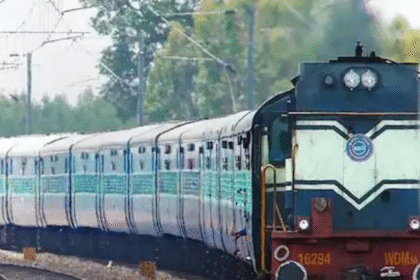Mumbai Train Tragedy: 9 Dead in Mumbra Horror – Can India Prevent the Next Rail Disaster
Tragedy strikes Mumbai as 9 die in the Mumbra train incident. Can India’s rail system prevent another disaster? Urgent questions raised on safety and accountability
Mumbai – June 2025: A city that never sleeps was jolted awake once again by the deafening sound of tragedy. On a humid morning, a routine commuter train on the Central Railway line derailed near Mumbra, leaving 9 people dead and over 40 injured, some critically. The latest rail disaster has renewed public anger, raised urgent safety concerns, and reignited debates over India’s aging railway infrastructure.
According to preliminary reports, the incident occurred at approximately 7:45 AM during peak rush hour, when a local train heading from Kalyan to Chhatrapati Shivaji Maharaj Terminus (CSMT) derailed just after crossing the Mumbra station. Witnesses describe a “sudden jolt” followed by “a deafening crash” as three coaches jumped off the tracks and toppled over, crushing several passengers and causing chaos on the tracks.

Emergency services arrived swiftly, but the dense crowds and congested access roads delayed critical rescue efforts. Local residents joined hands with first responders, helping to pull passengers from mangled metal and shattered glass. Among the deceased were daily wage earners, students, and office-goers—ordinary citizens caught in a tragedy that experts say was “entirely preventable.”
India’s railway system, often dubbed the “lifeline of the nation,” carries more than 23 million passengers daily. Yet, it is also one of the world’s most overburdened and under-maintained networks. According to a 2024 Railway Safety Report, over 280 derailments were recorded in the past five years, with most accidents attributed to track failures, outdated signaling systems, and insufficient maintenance.
The Mumbra derailment adds to a long list of tragic rail incidents that expose systemic neglect. Despite repeated promises of modernization and safety upgrades, many of India’s local routes still operate with outdated coaches, aged tracks, and overloaded carriages. In the case of Mumbra, sources within Central Railway have admitted that the section had been flagged for “urgent repairs” in early 2025—repairs that never materialized.
Social media erupted with rage, grief, and demands for accountability within minutes of the incident. Hashtags like #MumbraTragedy, #MumbaiTrainCrash, and #RailSafetyNow trended across platforms. Commuters and activists have slammed the Railway Ministry for prioritizing high-speed trains and vanity infrastructure over the safety of millions who depend on the local train network every day.
Opposition leaders have called for an independent probe, accusing the government of “criminal negligence” and “systemic failure.” In response, the Railway Minister announced an ex-gratia compensation of ₹10 lakh for families of the deceased and ₹2 lakh for the injured, along with a high-level inquiry into the cause of the derailment.
The most pressing question now is not just who is to blame, but how to ensure this doesn’t happen again. Experts suggest a multi-pronged approach:
- Immediate Investment in Track Maintenance: At least 40% of Central Railway’s track sections are overdue for maintenance or replacement, according to insiders. This backlog must be cleared on a war footing.
- Modernizing the Local Network: Implementation of automatic train control systems, better signaling infrastructure, and safer coaches can reduce human error and mechanical failures.
- Decentralizing Oversight: Empowering local zones with budget and decision-making autonomy can speed up critical safety works, rather than waiting for approvals from Delhi.
- Regular Safety Audits: Independent and transparent safety audits, made public, can ensure accountability and pressure authorities to act before tragedy strikes.
The Mumbra tragedy is more than an isolated accident—it’s a symptom of chronic underinvestment in the lifeline of India’s financial capital. With Mumbai’s population growing and its suburbs stretching farther, the city’s overburdened rail network is on a collision course with disaster unless systemic changes are made.
As families mourn their loved ones and the city grapples with the aftermath, the question lingers:
Read Also : IAF Boosts Air Power: 6 AWACS & 12 Mid-Air Refuellers to Sharpen Strike Capabilities








